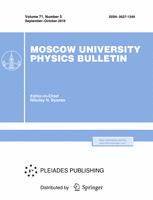Spin tunnel magnetoresistive nanostructures containing a synthetic antiferromagnet significantly improve the signal-to-noise ratio and power consumption of magnetoelectronic products. Magnetic annealing of spin-tunnel magnetoresistive nanostructures promotes crystallization of the amorphous CoFeB film at the boundaries with the MgO barrier layer, providing coherent tunneling of electrons and a significant increase in the magnetoresistive effect. In particular, during thermomagnetic treatment it is possible to form the required direction of the unidirectional anisotropy axis to create a crossed magnetic configuration of free and fixed layers, which makes it possible to obtain linearization of the magnetoresistive curve in the region of weak magnetic fields. It has been found out that thermomagnetic treatment can be effectively used to control the static and dynamic magnetic properties of spin-tunnel magnetoresistive nanostructures with a synthetic antiferromagnet; therefore, an urgent task is to study their magnetic properties after magnetic annealing. The nanostructures Ta / Co95Fe5 / Ru / Co95Fe5 / Ta and Ta / Co40Fe40B20 / Ru / Co95Fe5 / Ta were measured on a specialized equipment, and their magnetization reversal loops after thermomagnetic treatment were determined. As a result of magnetic annealing of spin-tunnel magnetoresistive structures with a thickness of the non-magnetic layer of a synthetic antiferromagnet corresponding to the first antiferromagnetic maximum, the destruction of the antiferromagnetic coupling of the layers occurs at temperatures below 300 °C.
75.70.-i Magnetic properties of thin films, surfaces, and interfaces
$^1$Scientific-manufacturing complex “Technological centre”



